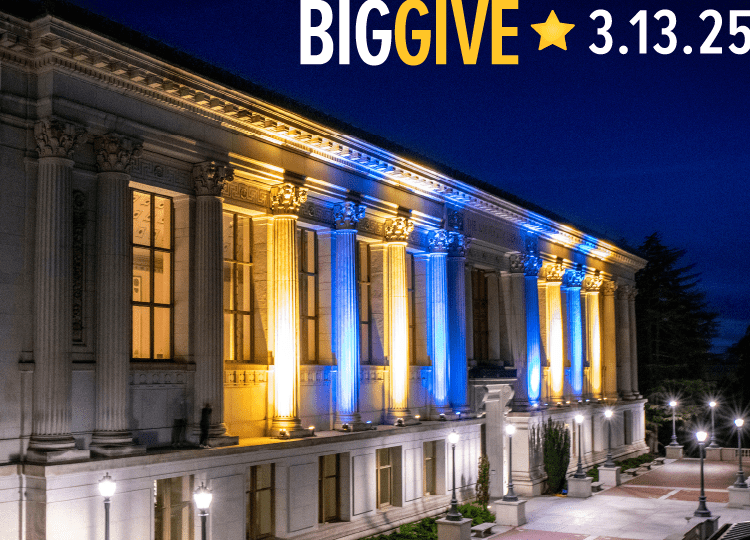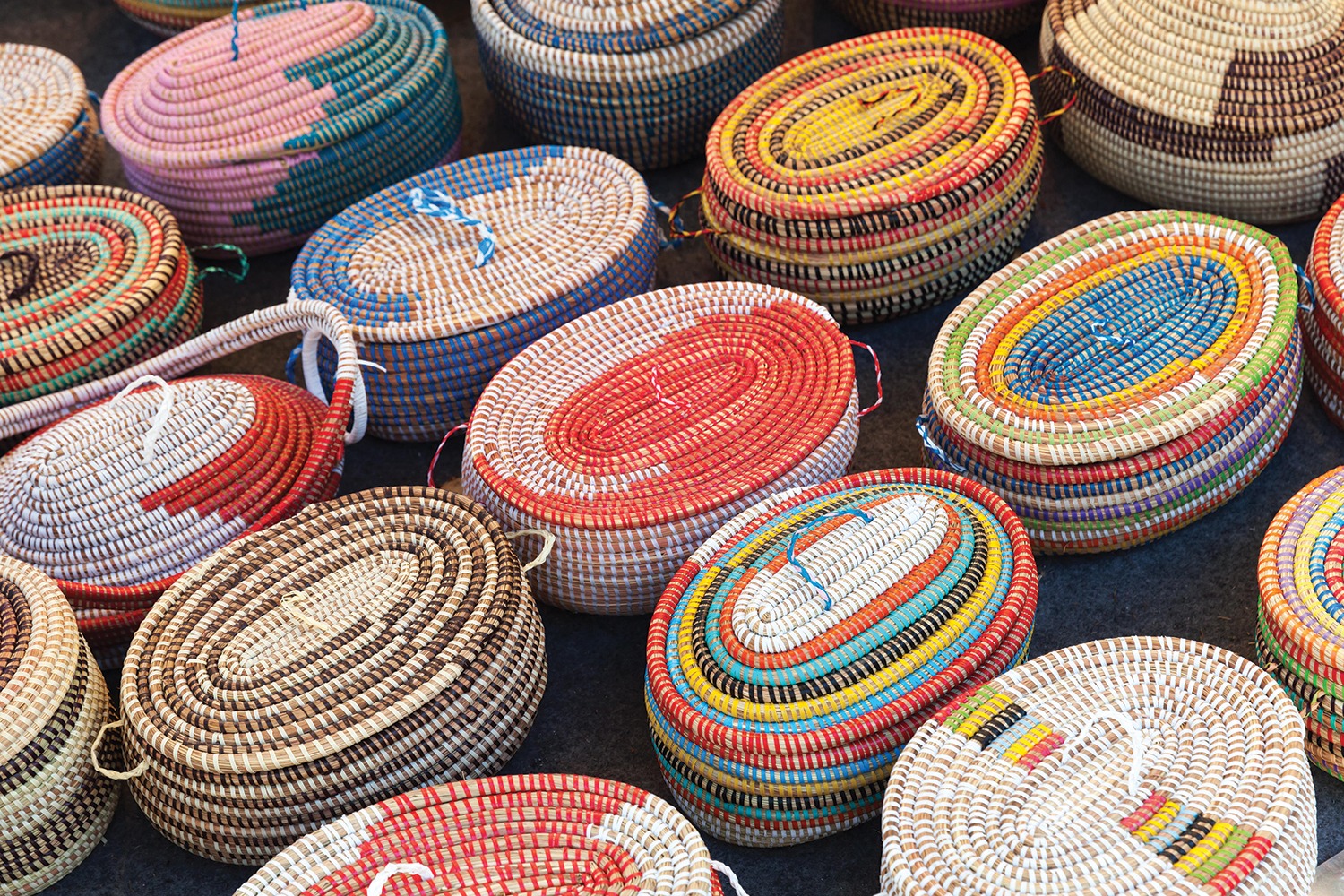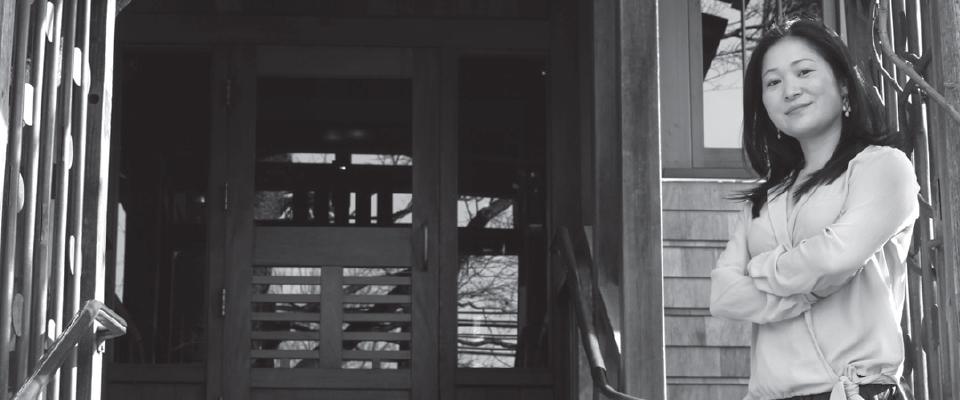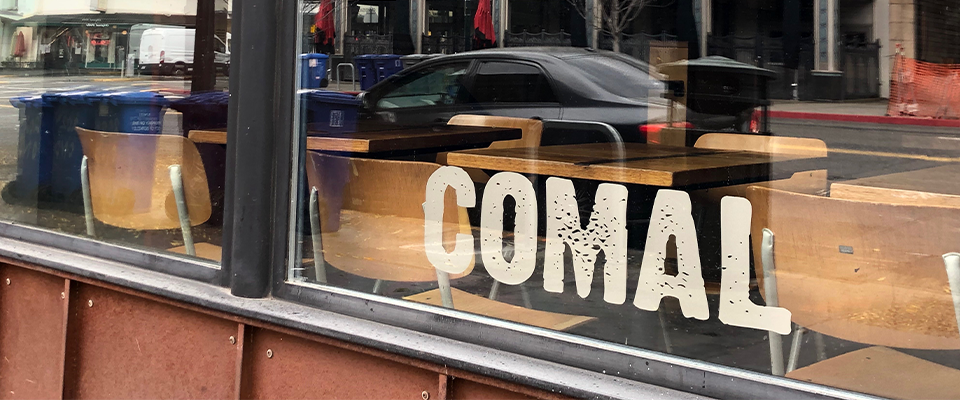If you’re going for a Ph.D. in business, there are plenty of American universities where you can get this prized degree, but only one of them is less than a mile from the birthplace of California cuisine. Sohyeong Kim was an aspiring Ph.D. student on the day in 2009 when her faculty advisor took her to lunch at Berkeley’s Chez Panisse, changing both her outlook on eating and her dissertation topic.
Having previously toiled in sober corporate halls, subsisting on the predictable offerings of chain restaurants, Kim came to Berkeley in fall 2007 determined to do a serious study of open innovation. It was while slurping up Hog Island oysters in the upstairs café at Chez Panisse that Kim got the idea of focusing her Ph.D. dissertation on the exuberant, wild, open-ended, sometimes chaotic and always innovative world of Alice Waters.
Chez Panisse, the restaurant Waters created with Paul Aratow in 1971, has a worldwide reputation as a pioneer of the restaurant business. It popularized the now-familiar practice of seeking local fruits, vegetables, meat, fish and poultry—one of the foundations of a new style of restaurant cooking. Now it’s called farm-to-table, and it’s fashionable and trendy. But when Chez Panisse started, it was all new and fresh. Alice’s restaurant, to coin a phrase, started out with an informal, family-style dining room downstairs and later added a café on the second floor. Its patrons included professors from the University and, ultimately, such luminaries as President Clinton. The reviewers came and dined and then swooned all over the pages of the kinds of newspapers and magazines that were read by the nation’s burgeoning class of upscale foodies. Chez Panisse had found its niche—indeed, it may well have created it.
Kim grew up on the island of Jeju off the southern tip of South Korea, where farm-to-table dishes and chichi wine lists were not on the menu. Her father was a doctor of Chinese medicine, and as a child, Kim was consumed with becoming a professional violinist—“my world began with music, even before reading,” she says now. When she was 14, she moved to her maternal grandmother’s house in Seoul, just so she could attend a special music school. The obsession with becoming a violinist lasted until she was about 20, when she decided to explore the rest of the world. By 1999, she had a B.A. in psychology from Korea University, and two years later she earned an M.S. in management information systems. From there, she was off to the London School of Economics for another master’s degree. Eventually, she gravitated to the world of engineering and technology, working for Cisco Systems and Panasonic. For part of 2007, she was a member of the “innovation management center” at Mercedes-Benz in Stuttgart, where she dealt with marketing, engineering and design. Along the way she became intrigued with open innovation.
Kim describes open innovation this way: “[It is] the use of inflows and outflows of knowledge in order to accelerate innovation processes and to expand the market. In traditional business, corporations try to protect their knowledge gained from research and development because those are their assets for innovation.” Open innovation means using “outside and inside knowledge.” In simple terms, it means using everything you can find—information from friends, from family, and from co-workers. With Chez Panisse, of course, open innovation was always a way of life—it was something as natural to the Chez Panisse culture as water is to fresh fish.
When Kim began her doctoral work on open innovation, she soon found herself being mentored by Henry Chesbrough, faculty director of the Garwood Center for Corporate Innovation at the Haas School of Business. Chesbrough said that he had already been studying the business of restaurants and the “combination of my discussion of that and her study of open innovation” led them to further conversation over lunch at the Chez Panisse café. There, Chesbrough said, “the menu itself had detailed descriptions not just of the ingredients but where the ingredients came from. That made an impression on her.”
Kim put it more succinctly. “I loved it,” she said. “It had a very classic, very humble, very Berkeley feeling.” She decided to make Chez Panisse the focus of her Ph.D. and started reading up (there’s no dearth of articles and books on Chez Panisse) and learned about “the surrounding ecosystems behind the restaurant, the farmers, wine merchants, suppliers, alumni restaurateurs, food educators and [food] journalists.” She soon learned that chefs, bakers and others who had worked at Chez Panisse had gone out into the world of food and had created their own businesses—Kim said that at last count she figured that 277 restaurants or bakeries or consultancies or other food-related activities had been created by 76 alumni of Alice Waters’ operation on Shattuck Avenue in Berkeley. There are Chez Panisse alums in North America, Europe, the Middle East and Asia, but around 80 percent of them are in the San Francisco Bay Area. At that lunch with Chesbrough, the bread was from Acme Bread Co., founded by former Chez Panisse baker Steve Sullivan; and the oysters came from Hog Island Oyster Co., longtime Bay Area supplier, and, in effect, a favored member of the extended Chez Panisse family.

Then she started doing field research, attending food festivals and wine parties, haunting all the Bay Area farmers’ markets, hitting a book party at the Berkeley wine store of Kermit Lynch, another important light in the Alice Waters firmament. But Kim had yet to crack the inner sanctum.
One day, she just went and knocked on the door of Chez Panisse general manager Jennifer Sherman. Sherman invited her in and told her the history of Chez Panisse. The next step was to volunteer at the Edible Schoolyard, located at the Martin Luther King Jr. Middle School in Berkeley. The schoolyard project, supported by the Chez Panisse Foundation, teaches children about farming, raising crops and preparing food, among other things. Kim cultivated the Edible Schoolyard people and from there she got to know more folks who either were currently at Chez Panisse or had once worked there.
Kim ingratiated herself into the Chez Panisse family, helping out at the restaurant’s 40th anniversary party in 2011. Then, in a plum opportunity, Kim accompanied the Chez Panisse driver, Dhondup Karpo, as he made the rounds of various farms and other suppliers, picking up fresh food for the day’s offerings at the restaurant. Along the way, she created a database of Chez Panisse alumni from 1971 to 2012, showing what they did while working for Waters and how and where they created their spin-offs.
Then she started interviewing them. First, she would try to find them. Some were busy, and many were really busy. In many cases, she found that the best method was to make a date, go to a restaurant and simply try to snag the chef for an interview between meals. She soon learned that, of all the busy people in the food world, chefs are extremely busy.
“At other restaurants, the culture has a lot of yelling and screaming and crying. It’s very competitive. At Chez Panisse, they give the people more autonomy.”
One of her most valuable sources in chasing down the gestalt of Chez Panisse was Christopher Lee, who had worked at the restaurant for 16 years—10 of them as chef in the downstairs part—and is now a chef and restaurant consultant in New York and Europe. When Kim introduced herself at a food event years ago, Lee says he thought she was just another newspaper writer, seeking quotes for a topical piece, but “when she started to talk, I realized it was a much bigger project.” Impressed with her research into the heart of Chez Panisse culture, Lee became something of an informal mentor to Kim for “a couple of years.” He said he was particularly impressed with a graphic Kim designed, showing some 40 years of Chez Panisse history, with various circles and ideograms representing the restaurant and its alumni ventures. It was “this dynamic graphic” that, Lee said, “gave an illustration” to the restaurant’s history.
Others also found time to talk to Kim, and they still find time in their frenetic lives to occasionally come back to the mother ship and contribute their own particular talents to the Chez Panisse menu for a week or two. This is the core of the restaurant’s open innovation culture—what some of the old hands call the “Chez Alums” or members of “Alice’s diaspora.” And this might be as good a place as any to describe the culture of Alice Waters University.
“One of the basic philosophies of Chez Panisse is continuing education,” said general manager Sherman, herself a former Chez Panisse cook. “We have really good sabbatical policies”—chefs in the restaurant get six paid months off per year, so they can go off and learn more about food—“and we encourage the floor people [waiters and bus persons] to work in the kitchen.” Chez Panisse is in it for the long haul, as far as its employees go—one chef who just retired had been there 30 years and another retiree had logged 25 years. Furthermore, Sherman said managers get a three-month sabbatical every seven years, which gives lower-ranking staffers “a chance to take the helm.”
“Alice (Waters) always felt it was important not to overwork people,” Sherman said. “They need time out in the world, to get rejuvenated.” It’s not as if the kitchen is bare, however, when the employees are on leave. Sherman said when chefs are on vacation or leave, sous chefs take over. Chefs who work the café portion of Chez Panisse work three days a week, but they’re pretty intense days, regularly lasting up to 12 hours, and they come in other days of the week to help plan menus. The restaurant also regularly exchanges chefs with the American Academy in Rome, something that furthers the cross-cultural aims of Chez Panisse.
Asked what a chef from Chez Panisse might bring back from a stint in Europe, Sherman said, “When you send a young cook to Rome for three or six months, they’re absolutely transformed.” It’s the kind of thing, she said, where they’re “learning the food sensibility of another culture. It opens your eyes, it enriches you.”
In talking to the various Chez alums about “the culture of Chez Panisse,” Kim found that “at other [non–Chez Panisse alumni] restaurants, the culture has a lot of yelling and screaming and crying. It’s very competitive. At Chez Panisse, they give the people more autonomy. For Alice Waters, it’s less a thing of commanding, and more of trying to see what people can do.” As those protégés left and started populating the world with their own eateries, the alumni system began to flourish. Chefs who were trained at Chez Panisse developed their own, individually styled menus and then would come back to offer a soupçon of what they had learned.
And that’s something Alice’s diaspora has in common with the food world generally, Kim discovered—cooks have been sharing recipes since time began. “Traditionally,” Kim writes in her Ph.D. dissertation, “the chef community believes that ‘culinary traditions are collective, cumulative inventions, a heritage created by hundreds of generations of cooks’ [the quote is from The Knockoff Economy by Kal Raustiala and Christopher Sprigman]. Chefs work in an open-source model, drawing inspiration from fellow chefs’ ideas and expanding them freely.”
It may be traditional for chefs, but mainstream business has only recently figured out that maybe it’s better to collaborate than keep everything secret.
Chesbrough points to a survey he did of businesses slightly larger than Chez Panisse—companies doing more than $250 million a year in annual sales —some “78 percent of the firms we surveyed were actually practicing open innovation in the company. In 71 percent of the companies, management support for open innovation was growing, compared to three years ago.” Still, “it’s a relatively new development.”
Kim looks at the Chez Panisse world—the extended family and mutual trading of expertise—more as an ecosystem than anything else. Time after time, in her interviews with the Chez Panisse family and with this reporter, and in writing her dissertation, the word ecosystem is used to describe this almost global, highly inclusive network of chefs, bakers, wineries, consultants, writers, menu designers, farmers, fishmongers, butchers and a myriad of other professionals, advisers and volunteers, all teaching each other, and spreading the word, getting this new information into mainstream circulation.
For Kim, watching “a community of entrepreneurs learning from each other” was an eye-opening experience. Immersing herself in the world of Northern California cookery, and seeing it through the prism of Chez Panisse, gave her, she says, a healthy respect for how small companies and startups operate.
Kim is now a postdoctoral researcher in the Haas business school on the Berkeley campus. As for her own eating habits, the woman who used to gulp down food on the run while working in the auto world or on the campuses of Silicon Valley says, “I used to go to chains, like the Cheesecake Factory. I didn’t have any sense of differentiating good food from American chain restaurants.”
And now?
“Now I don’t eat out much, but when I do, I go to these alums’ restaurants.”
Michael Taylor was a reporter and editor at the San Francisco Chronicle.






















